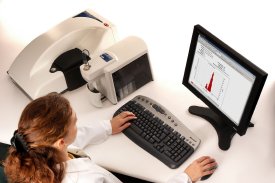The Zetasizer Nano particle characterization system from Malvern Panalytical has become an essential tool at a water treatment production facility in the US. Here it is being used to monitor the zeta potential of raw water in order to optimise the concentration of alum added as a flocculating agent. Zeta potential values are key to monitoring and maintaining optimum conditions in the plant, and measurements using the Zetasizer Nano have proved to be both easy to make and operator independent.

Impurities in waste water are primarily anionic, and cationic additives have been developed for their neutralisation. By optimising the addition of additive, the amount of additive used and hence the cost of treatment, can be reduced.
The appearance of turbid water is due to the presence of suspended particles. By controlling the effective charge of these contaminating particles the efficiency of removal can be improved. The effective charge can be quantified through the measurement of zeta potential. At close-to-neutral charge, particles flocculate and sediment leaving the water clear. Zeta potential measurements provide a tool for quantifying the optimum concentration of additive required.
Studies of additive concentration versus zeta potential and turbidity have shown that flocculant addition beyond a certain point is counter productive. For example in one system, when the zeta potential of the water mixture is close to zero, so too is turbidity. At low doses of flocculating agent the zeta potential is approximately -16mV and turbidity is high. At +2mV turbidity it is at its minimum and beyond this point the further addition of flocculating agent reverses and increases the charge of the contaminating material, restabilising it in the water, increasing the turbidity.
The goal of the US facility is to maintain a zeta potential of around zero. Only by measuring and monitoring the zeta potential on a control chart can operators make rational and optimal adjustments in the amount of alum added.
The Zetasizer Nano series combines dynamic, static and electrophoretic light scattering, enabling the measurement of particle size and zeta potential in a single easy to use system. A unique cell for zeta potential measurement consists of an electrode and folded capillary moulded into a single chamber, that can be disposed of after a number of measurements instead of cleaning. Importantly for many water treatment applications, the addition of the MPT-2 Autotitrator allows zeta potential to be studied as a function of additive. www.malvern.com